Have you ever thought of where all the souls go after death? Or what if I tell you there is a medium to connect with those souls even after so many years of their passing? Yes, you read it right — you can connect with the souls of your loved ones and your ancestors.
According to Hindu tradition, there is a sacred fortnight every year when families remember and offer prayers to departed souls. This period is called Shradh Paksha or Pitru Paksha.
In this blog, we will explore the spiritual importance, rituals, mythological stories, and Shradh’s rules of Shradh Paksha to understand how you can seek the blessings of your ancestors.
What is Shradh Paksha?
In Sanatan Dharma, honouring one’s ancestors has been a crucial thing since ancient times. So, if we break down the term Shradh, then its direct meaning is “that which is done with devotion”. Whatever is offered with devotion for our ancestors is called Shradh, whether it is water, food, a charitable deed, or remembering them.
The spiritual significance of Pitru Paksha lies in honouring our ancestors on behalf of the sacrifices they made for us. Followers of Sanatan Dharma firmly believe that the souls of their ancestors visit the earth during this sacred period. They perform Rituals like Tarpan and Pind Daan to invoke their blessings for prosperity and peace in the family.
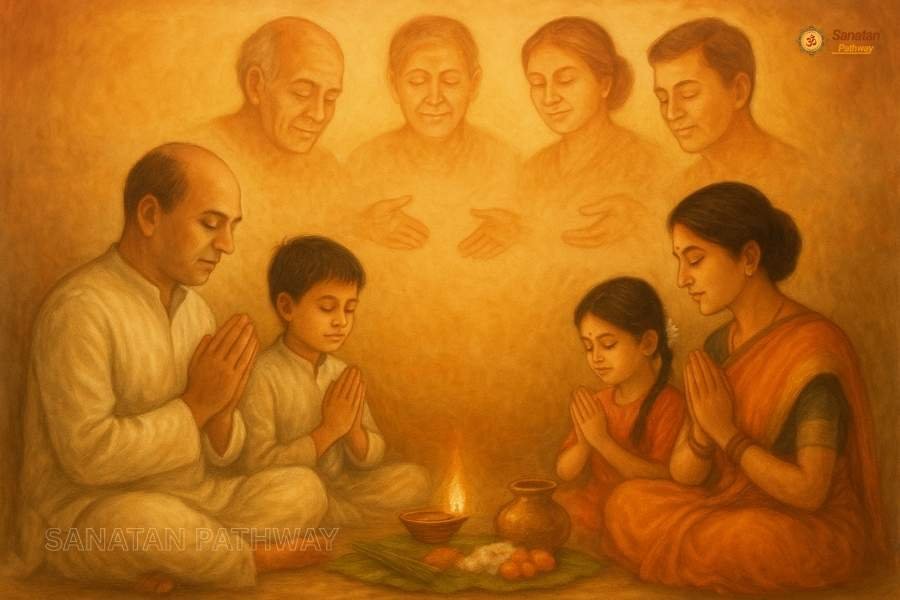
Mythological Significance of Shradh Paksha
The Story of Karna
A well-known reference to the Shradh Paksh comes from the Mahabharata. According to which, when Karna died, he was taken to heaven. There, he was given gold, jewellery, and precious stones as food to eat. Surprised, he prayed to Lord Indra, asking why he was being served such offerings instead of food.
Then Indra explained that in his entire life, Karna had donated gold, wealth, and land, but never offered food or water to his ancestors. Realizing his mistake, Karna requested a chance to make amends. Indra permitted him to return to earth for 15 days to perform Shradh and satisfy his ancestors.
This sacred period later became famous as Pitru Paksha or Shradh Paksha, which shows the importance of offering food to one’s ancestors.
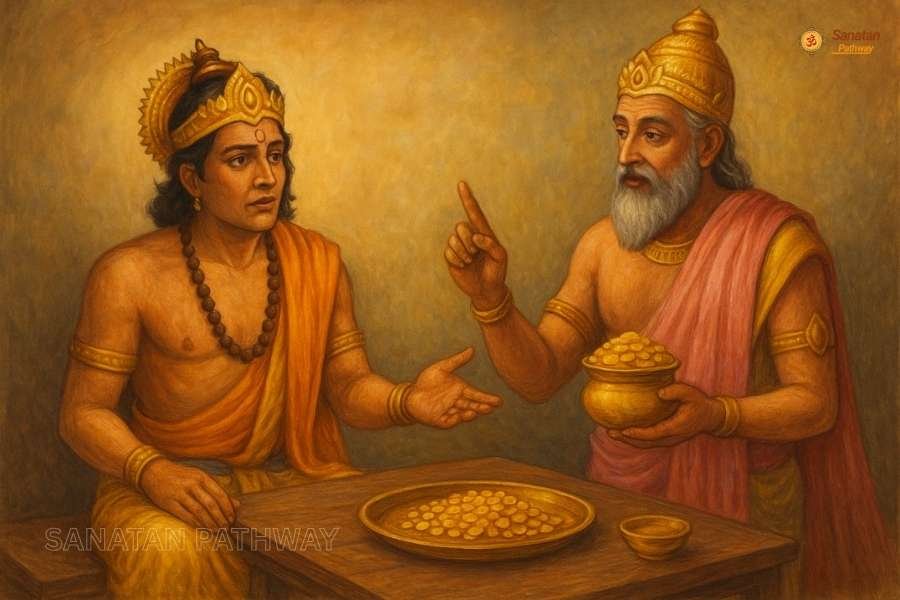
References in the Garuda Purana and Scriptures
The Garuda Purana is an important Hindu scripture in which Shradh is depicted as a means through which departed souls attain peace. It states that whenever the descendants perform rituals of Shradh with full faith, their ancestors bless them with spiritual progress, along with health and wealth for the family.
Other scriptures like the Vishnu Purana and Matsya Purana also state that ignoring Shradh leads to difficulties in the lives of family members, whether mental or physical. On the other hand, sincerely remembering ancestors is believed to open the storehouse of blessings for their descendants. In this way, the rituals of Shradh act as a sacred medium of remembrance.
Ancestors Visiting the Earth
It is believed that during Shradh Paksha, the souls of ancestors appear on earth. They accept the food and water offered by their descendants and shower them with blessings. This belief creates a spiritual bond between the living and the departed souls.
When is Shradh Paksha Observed?
According to the Hindu lunar calendar, Shradh Paksha is observed in the Krishna Paksha (waning phase) of the Ashwin month. It lasts for 16 lunar days (tithis), and each day is dedicated to ancestors who passed away on that particular tithi.
In 2025, Shradh Paksha will be observed from September 07 to September 21.
Rituals of Shradh Paksha
During Shradh Paksha, descendants pay homage to their ancestors by performing sacred rituals. These include:
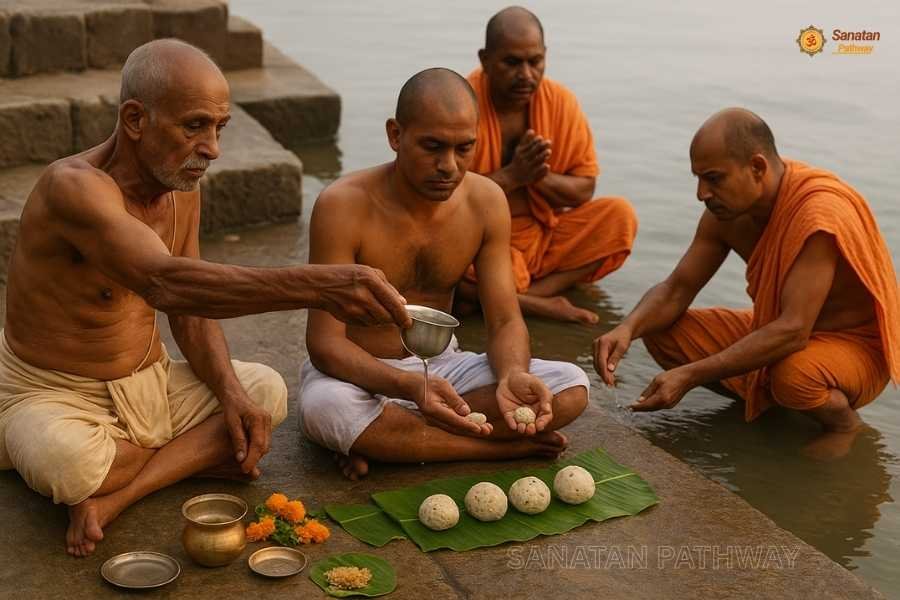
- Shradh Karma – Offering food, water, and prayers on the death tithi of ancestors.
- Pind Daan – Offering rice balls mixed with ghee and sesame seeds, symbolizing nourishment for departed souls.
- Tarpan – Offering water mixed with sesame seeds and barley to ancestors while chanting mantras.
- Feeding Brahmins and Cows – It is believed that feeding Brahmins, cows, and the needy during Shradh brings merit equivalent to directly feeding one’s ancestors.
Rules and Customs to Follow
- Rituals should be performed with purity and devotion.
- During this period, celebrations, weddings, auspicious activities, or starting a new venture should be avoided.
- One should consume satvik food, which is completely free from non-vegetarian items, and one should also avoid alcohol, garlic, and onions.
Do’s and Don’ts During Shradh Paksha
Do’s:
- Offer food to the ancestors on the Tithi of their death.
- Whenever you perform rituals, use silver and copper utensils.
- Chant mantras sincerely.
Don’ts:
- Do not disrespect elders.
- Hair and nails should not be cut during this time.
- Avoid lying, cheating, or indulging in any violent activity.
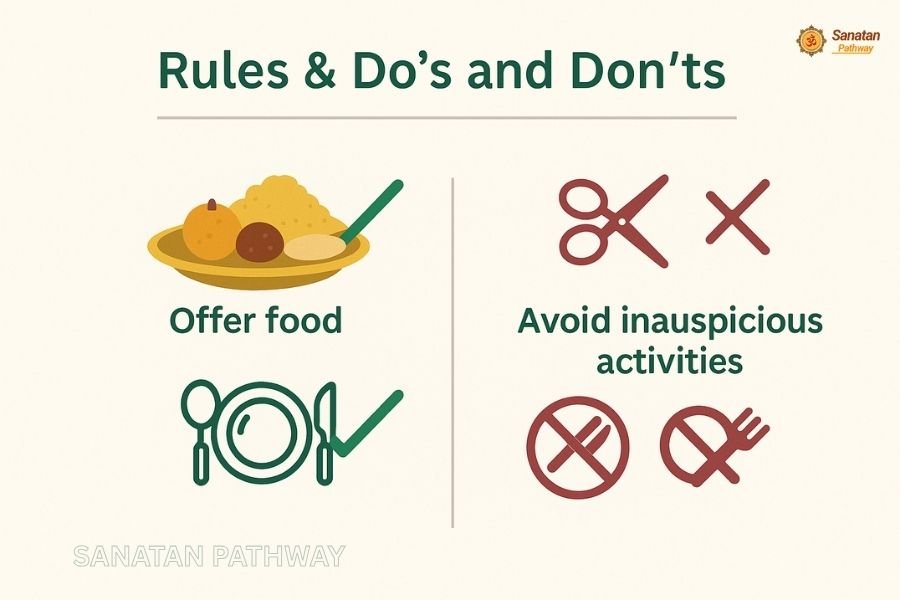
Regional Variations
Some pilgrimage centers in India are considered important places to perform the rituals of Shradh:
- Gaya (Bihar) – This place is considered the most sacred for Shradh and Pind Daan.
- Varanasi (Uttar Pradesh) – The rituals that are performed here with devotion are believed to provide salvation.
- Prayagraj (Uttar Pradesh) – The Rivers Ganga, Yamuna, and Saraswati meet here, and this place is considered very auspicious for performing Tarpan.
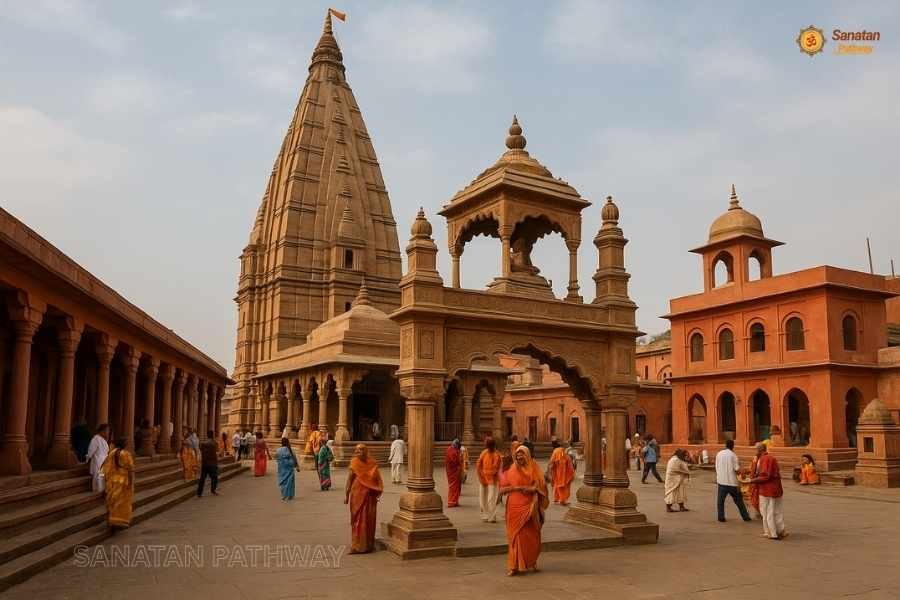
The Story of Gayasur and the Importance of Gaya
Gaya (Bihar) holds a significant place for performing Shradh rituals. It has a connection with a demon, which is why this place has gained fame.
The Legend of Gayasur
According to mythology, Gayasur was a powerful demon who had extraordinary spiritual powers. After intense penance, his soul had become so pure that whoever saw even a glimpse of him would be liberated and attain salvation. The Gods became worried, thinking that the balance of the world was getting disturbed.
All the Gods went to Lord Vishnu for help. Then Lord Vishnu requested Gayasur to donate his holy body as the ground for performing the sacred yagya and rituals. Since Gayasur was benevolent, he accepted Lord Vishnu’s words and took the sacrifice. Lord Vishnu placed his foot on Gayasur’s head and blessed him, declaring that the place where he lay would forever be known as Gaya Kshetra.
It is believed that by performing Pind Daan and Shradh in Gaya, not only our ancestors but also the seven generations to come and the previous ones attain salvation. That is why Gaya has become a holy place for Shradh Paksha rituals.
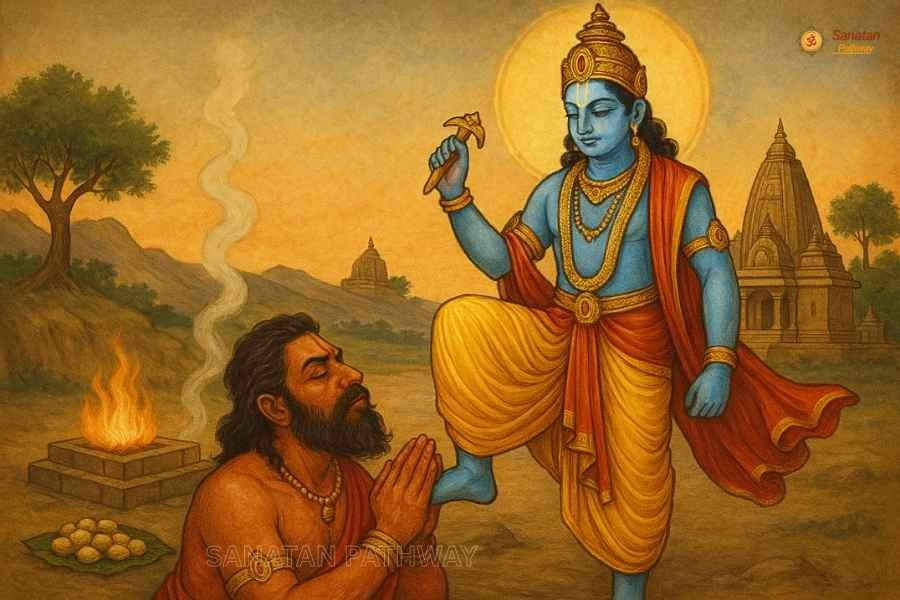
Common Questions (FAQs) About Shradh Paksha
1. Can women perform Shradh?
Traditionally, the rituals of Shradh are performed by male descendants only, but scriptures allow women also if there is no male descendant in their family.
2. What food is offered in Shradh Paksha?
Satvik food, like rice, pulses, ghee, milk, kheer, puri, and seasonal vegetables, is offered during the Shradh paksha. Dishes made of sesame and barley are considered highly auspicious for Pind daan.
3. Is it mandatory to perform rituals every year?
Yes, it is very important to perform Shradh every year. And if every day is not possible, you can offer prayers on Sarva Pitra Amavasya.
4. What is the difference between Shradh, Pind Daan, and Tarpan?
Shradh– Overall ritual of honoring your ancestors.
Pind daan– Offering rice to nourish the souls.
Tarpan– Offering sesame, mixed water, and barley to quench the thirst of our ancestors.
Conclusion
The time of Shradh is not just a ritual; it is a sacred reminder of our eternal connection with our ancestors. Through rituals such as Shradh, Pind Daan, and Tarpan, we remember, honor, seek their blessings, and ensure spiritual growth for us and future generations.
Mark the dates and reap the benefits of this sacred time. If possible, perform rituals in Gaya, one of the holiest sites for ancestral offerings, where blessings are said to multiply. By honoring our ancestors, we not only respect our ancestral lineage but also invite peace, prosperity, and harmony in our lives.

I’m Manohar Prajapat, founder of Sanatan Pathway.I write about Sanatan Dharma, Bhakti Leela, Hindu festivals, and the timeless wisdom of the Vedas — to help people live a more peaceful, dharmic life rooted in Indian spirituality.🕉 Read more at sanatanpathway.com

1 thought on “Shradh Paksha 2025: Rituals, Significance & How to Get Ancestors’ Blessings”